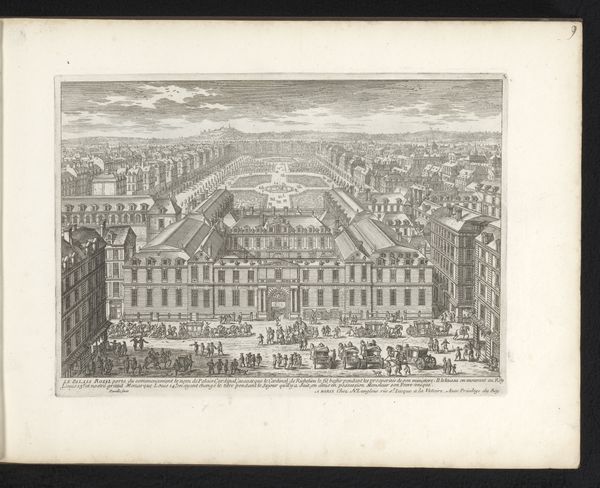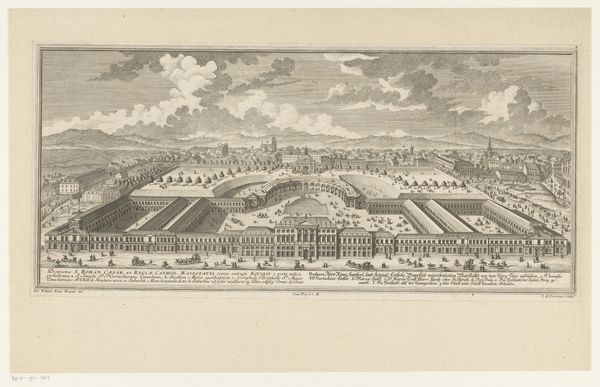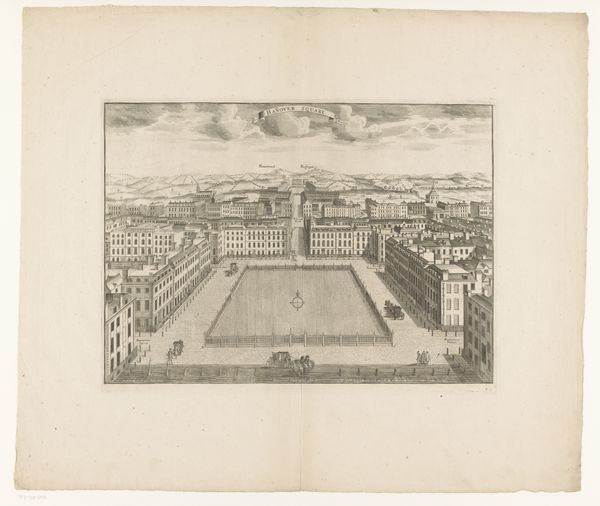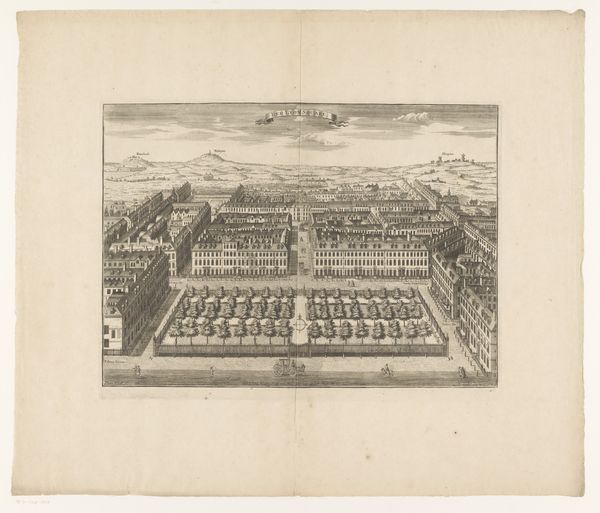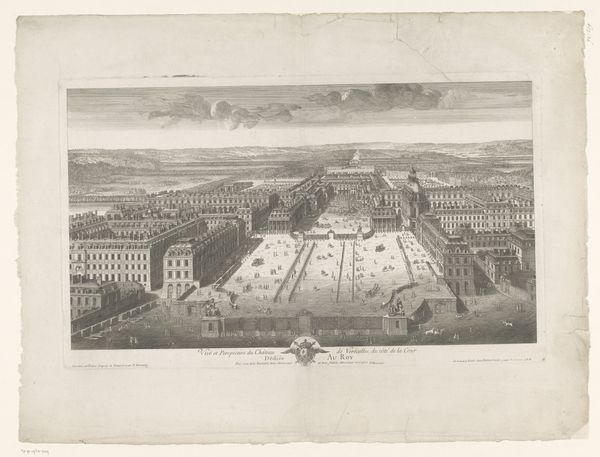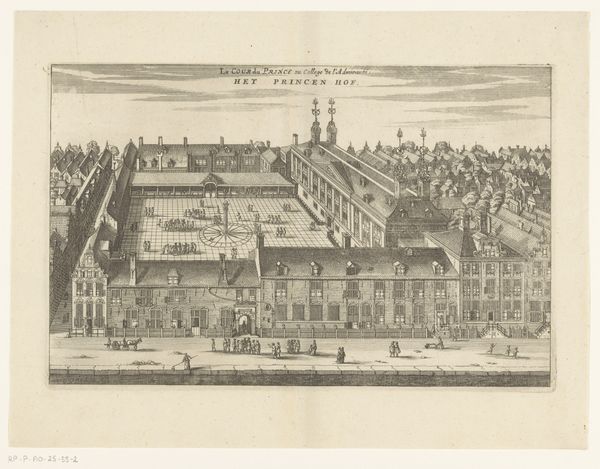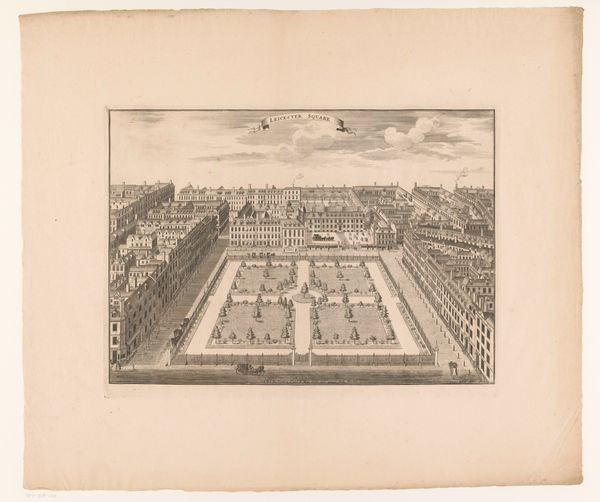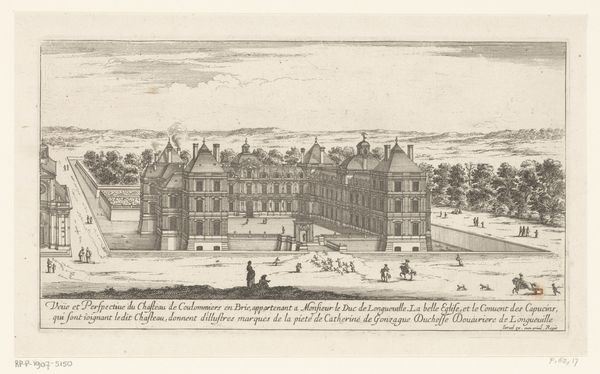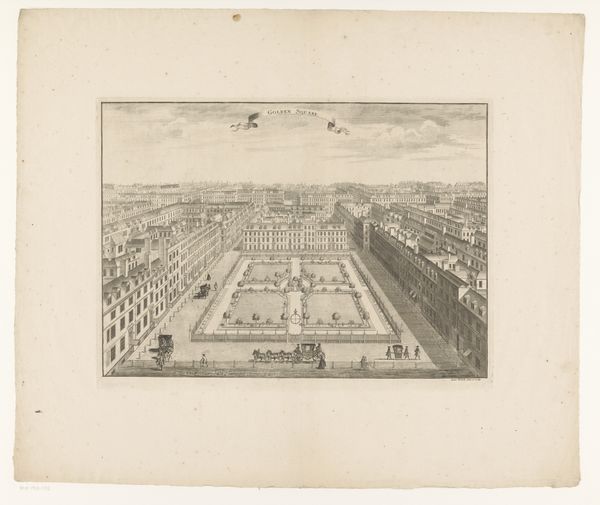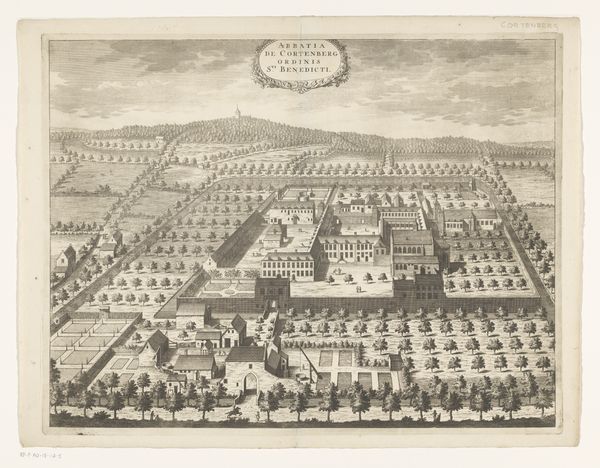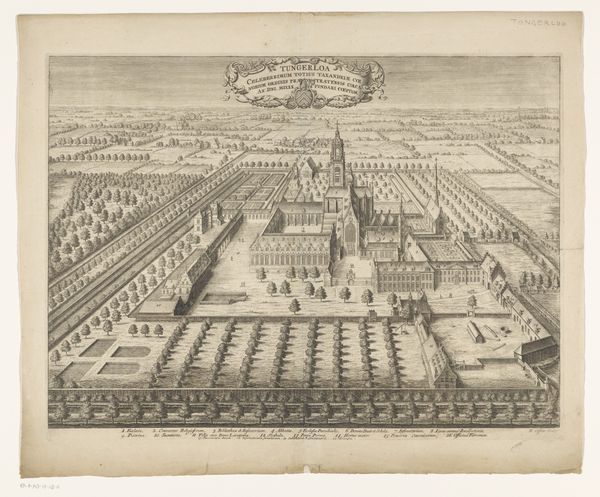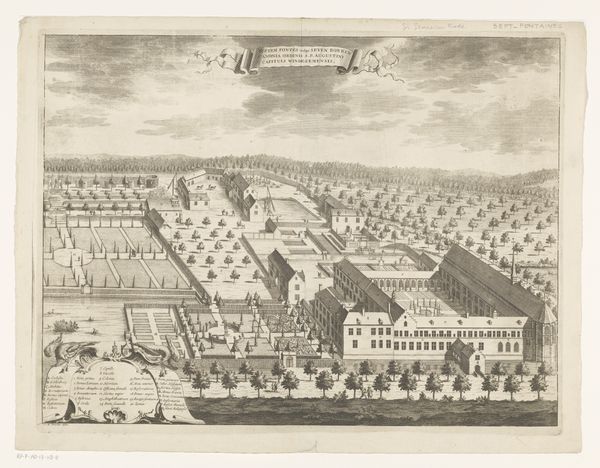
print, engraving
#
baroque
# print
#
cityscape
#
engraving
Dimensions: height 347 mm, width 466 mm
Copyright: Rijks Museum: Open Domain
Curator: This engraving, dating from 1720 to 1731, is entitled "Gezicht op Covent Garden" or, "View of Covent Garden." It is the work of Sutton Nicholls and offers a fascinating perspective on London. Editor: Immediately, I'm struck by the overwhelming impression of order. Everything is meticulously laid out, every building precisely rendered, creating an almost dreamlike city. Curator: Nicholls certainly emphasizes the ordered and rational design typical of the baroque period. Note how the receding lines of the buildings converge, directing the eye, imposing a calculated symmetry onto the sprawl. Editor: I’m more drawn to what’s happening in the square itself. That throng of people—it seems less about rigid structure and more about the human drama unfolding in this space. Commerce, daily life… these activities, aren’t they at odds with the formality of the architecture? Curator: A dialectic, perhaps. The market square presents a textural contrast to the hard edges and uniform facades. Notice the variations in hatching that create these effects – from the lighter tones used for buildings farther away to the intricate interplay of black lines used to illustrate groups in the square. Editor: It’s almost like two distinct visual languages, each telling its own story. Consider that column standing tall in the square...is it simply a decorative flourish, or does it perhaps represent a different sort of authority, the historical presence, if you will, of community, custom? Curator: Intriguing! It breaks the dominant grid pattern, you are right, functioning like an axis, dividing the marketplace, disrupting the easy readings one might be tempted to make regarding the work’s otherwise systematic appearance. Editor: Indeed. In that regard, what's especially potent to me is the way the artist uses this high vantage point. It’s not just a rendering of urban space, it's presenting a symbolic organization of social life, placing commerce, governance, and society itself in carefully calibrated harmony. Curator: Your attention to historical symbology is certainly insightful. And by thinking in terms of systems of composition, what emerges for me is just how effectively Sutton communicates this totalizing logic. It brings one to understand how power, both visually and physically, was designed to function during the period. Editor: Thinking about symbols and composition, both approaches provide means of seeing how urban planning serves to project specific beliefs about community. A potent statement about an era caught between traditional power structures and new visions of city life!
Comments
No comments
Be the first to comment and join the conversation on the ultimate creative platform.

